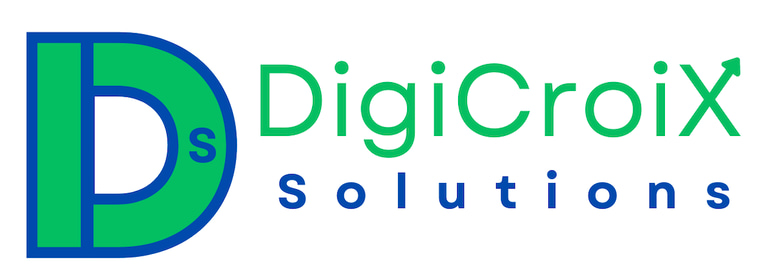The Doctor’s Guide to Modern Patient Acquisition Systems
Your clinic can’t rely on outdated systems anymore. Learn how to implement modern patient acquisition systems that scale predictably. DigiCroiX builds customized funnels for fast, consistent growth.
Vishwa Raval
6/15/20255 min read


Understanding the Importance of Modern Patient Acquisition Systems
The landscape of healthcare is changing rapidly, and traditional patient acquisition methods are increasingly becoming outdated. This evolution is driven by several factors, including changes in patient behavior, advancements in technology, and the competitive nature of the healthcare market. Patients today are more informed and empowered than ever before, making it essential for healthcare providers to adapt their strategies to successfully attract and retain patients.
With the rise of digital platforms, patients now have the ability to research healthcare options independently. They often rely on online reviews, social media, and telehealth services to make decisions about their care providers. Consequently, healthcare organizations must implement modern acquisition systems that capitalize on these platforms to engage potential patients effectively. According to a report by the Pew Research Center, 77% of patients actively search online for healthcare information before making appointments, underscoring the necessity of a strong digital presence.
Technological advancements also play a crucial role in shaping modern patient acquisition strategies. Tools such as customer relationship management (CRM) systems, social media marketing, and search engine optimization (SEO) have become integral to effectively reaching patients. As practitioners leverage these tools, they can better understand patient needs, streamline communication, and personalize outreach efforts. For instance, a case study conducted by a prominent healthcare consultancy highlighted a 40% increase in patient acquisition for a clinic that implemented a comprehensive digital marketing strategy, demonstrating the potential effectiveness of modern systems.
Furthermore, the competitive pressures within the healthcare sector necessitate a shift toward innovative patient acquisition approaches. As more healthcare facilities enter the market, standing out becomes vital for sustaining growth. Clinics that fail to adapt risk losing market share to those that have embraced modern strategies, ultimately threatening their viability. In conclusion, embracing modern patient acquisition systems is not merely a trend but a necessity that healthcare providers must prioritize to ensure long-term growth and sustainability in an evolving landscape.
Key Components of Effective Patient Acquisition Systems
In the digital age, effective patient acquisition systems are indispensable for healthcare providers seeking to attract and retain patients. To achieve this, multiple components must work collaboratively to create a seamless experience for potential patients. A well-rounded approach typically includes robust digital marketing strategies, user-friendly websites, patient relationship management (PRM) tools, and data analytics.
First, digital marketing strategies play a pivotal role in elevating a healthcare provider’s visibility. Utilizing search engine optimization (SEO), pay-per-click (PPC) advertising, and social media marketing can significantly enhance a practice's online presence. These strategies ensure that potential patients can easily find and engage with healthcare services, thereby increasing the likelihood of converting inquiries into appointments.
Another essential element is the design and functionality of user-friendly websites. A well-structured website should provide essential information clearly and concisely, ensuring that users can navigate it effortlessly. Features such as online appointment scheduling, patient portals, and comprehensive FAQs can greatly enhance user experience. A top-tier website not only informs but also builds trust with potential patients, facilitating engagement and retention.
Patient relationship management tools are also crucial in modern patient acquisition systems. These tools enable providers to track interactions with patients, manage appointments, and maintain communication through reminders and follow-ups. A PRM system can foster lasting relationships by personalizing patient experiences, which can lead to increased satisfaction and loyalty.
Finally, data analytics serves as the backbone of any effective patient acquisition system. By evaluating patient behavior, demographics, and acquisition channels, healthcare providers can make informed decisions to refine their strategies. Data-driven insights allow practices to optimize marketing efforts, ensuring resource allocation leads to the highest return on investment.
In conclusion, the integration of these components—digital marketing, user-friendly websites, patient relationship management tools, and data analytics—creates an effective patient acquisition system that not only attracts new patients but also facilitates long-term relationships with existing ones. The focus on functionality and user experience is paramount in fostering trust and improving patient engagement.
Implementing Customized Funnels for Growth
In today's competitive healthcare landscape, clinics must adopt a strategic approach to patient acquisition that caters to the unique needs of their prospective patients. Developing and implementing customized patient acquisition funnels is essential for this purpose. The first step in this process involves understanding the patient journey—a pathway that often spans from initial awareness of a clinic's services to the final decision-making stage when a potential patient chooses to book an appointment.
To create effective funnels, it is crucial to segment the target audience based on various criteria, such as demographics, medical needs, and stage of the patient journey. This segmentation allows clinics to tailor their marketing efforts, making campaigns more relevant and compelling for potential patients. For instance, a family clinic may focus on different messaging for expectant mothers compared to patients seeking specialized care for chronic conditions.
Once the segmentation is complete, clinics should engage in lead nurturing, which involves building relationships with potential patients through targeted communications. This can include personalized email campaigns, informative content like blog posts or videos, and social media interactions that provide insights into the clinic’s philosophy and services. Utilizing automation technology can streamline this process, enabling clinics to send timely follow-ups and reminders while maintaining a personal touch.
By integrating technology into their acquisition strategy, clinics can optimize their funnels for efficiency and effectiveness. Analytics tools can provide valuable insights into how potential patients interact with the funnels, permitting ongoing adjustments and enhancements. A data-driven approach enables clinics to refine their strategies continuously, ensuring they meet the evolving needs of their patients while achieving consistent growth.
Measuring Success and Adapting Strategies
Measuring the effectiveness of patient acquisition systems is crucial for modern clinics aiming to optimize their practices. By employing key performance indicators (KPIs), healthcare providers can gain insights into their patient acquisition efforts, allowing for informed decision-making and strategy refinement. Common KPIs include patient retention rates, new patient growth rate, cost per acquisition, and patient satisfaction scores. Tracking these metrics regularly helps clinics identify strengths and weaknesses in their efforts and facilitates targeted adjustments to their strategies.
To effectively measure these KPIs, clinics can utilize various tools, such as customer relationship management (CRM) software and analytics platforms. These tools not only streamline data collection but also provide valuable insights about patient behavior, trends, and preferences. Furthermore, integrating data from different sources, such as social media and online reviews, enriches understanding and allows for a comprehensive analysis of outreach effectiveness.
Analyzing patient data is essential for adapting strategies. By carefully examining feedback and demographic information, clinics can tailor their acquisition approaches to cater to the evolving needs of their patient population. For instance, if feedback indicates difficulty in booking appointments, a clinic can improve its online scheduling system or engage in marketing communications emphasizing ease of access.
Continuous improvement is a fundamental principle in modern patient acquisition systems. Organizations must remain agile, adapting their strategies based on patient feedback and changing market conditions. Regularly revisiting and updating acquisition tactics can help clinics stay ahead of the competition, ensuring long-term success. Active engagement with patients through surveys and social media can provide critical insights that shape future patient acquisition strategies, facilitating a resilient and responsive approach to meeting patient needs.
Get in Touch
Book your free consultation today and let's create a strategy to elevate your success!


Address
94 Shree Nagar Apartment, Sola Road, Naranpura, Ahmedabad, Gujarat, India 380063
6706 Fulton Avenue, Burnaby, BC, Canada V5E 3H1
Phone
+91 88497 12474
Quick Links
© 2025. All rights reserved.
Useful Links
Engagement
Subscribe
+91 88497 12474
